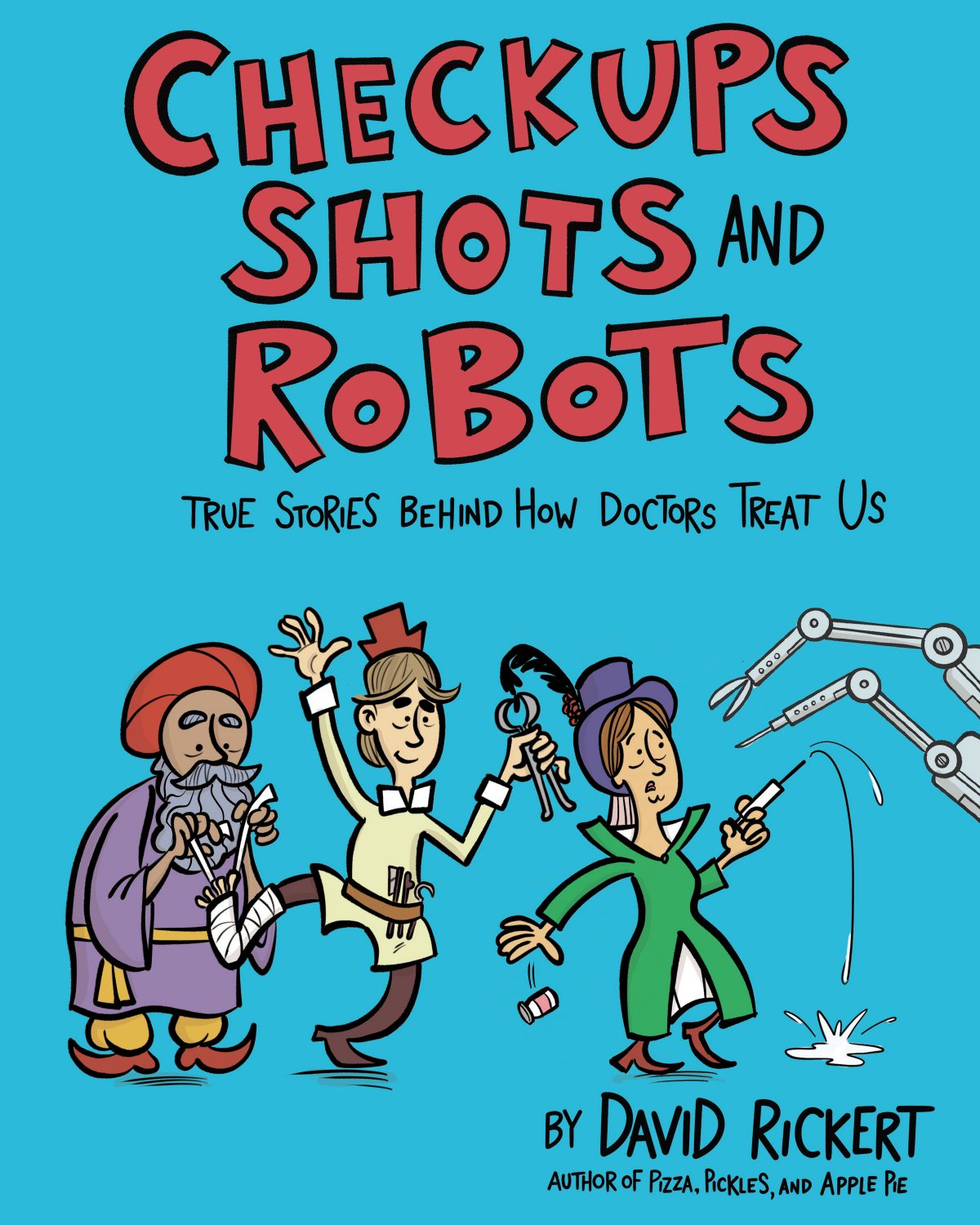One of the great joys I get when writing non-fiction books is finding a story that is so compelling I want to share it with everyone I know. And in many cases, I know it will be a great story for kids, and then I’ve struck gold. Such was the case with Checkups, Shots, and Robots: True Stories Behind How Doctors Heal Us. I found some juicy nuggets of wisdom that kids (and adults!) will love.
One of the themes of my book is that early civilizations didn’t know much about how the body worked but, through intuition and trial and error and a few lucky instances, they did get a lot of things right. Such was the case with vaccines. Before researching vaccines, I didn’t know much about them. I knew from getting a flu shot that vaccination involved building up immunity by injecting a small portion of the disease into the body. Ironically, while I was working on this part of the book I contracted a nasty case of shingles on my face and almost lost an eye. Get your shingles vaccine, folks.
I also knew a bit about smallpox, but here’s some details: smallpox was a deadly killer that wiped out entire populations, and was a leading cause of death for indigenous people in North America. It became an epidemic, and one out of every three people who got it died.
But, there was a solution. And it was a word I had never heard before: variolation. Here’s how it worked. From a page in Checkups, Shots, and Robots:
Ingenious, right? A combination of close observation and resourcefulness. And I knew kids were going to have a good laugh at someone getting ground up scabs blown up their nose. But the cool thing is that this is how vaccines work today! Even centuries ago, they had this figured out.
Of course there is always someone who takes great ideas to the masses, and one of those people was Edward Jenner, who created the first vaccine. Here’s his story:
But you might have thought, “Wait a second! This guy should NOT be running these types of experiments.” And that raises a question that I also explore in Checkups, Shots, and Robots. Namely, what is ethical in medical research? Do the ends always justify the means as long as we are saving lives? Here’s a discussion about that topic:
And this is what I strove for while working on Checkups, Shots, and Robots. I wanted to make it funny and interesting and hit all the major (and some lesser known) people in medicine. But there’s also a second conversation going on that involves people who didn’t really have a say in how they were treated (if they were treated at all) and how their bodies were used for research. I know kids are able to think about these topics, and while Checkups, Shots, and Robots is a lot of fun, there are opportunities to think about these larger issues. And maybe the next time they go to get a shot, they’ll have a good story to share with the pediatrician!
David grew up in Columbus, Ohio surrounded by stacks of MAD Magazines, Calvin and Hobbes collections, and Walt Disney comics. He spent most of his free time learning about sable hairbrushes, non-repro blue pencils, and Bristol board so he could pursue a career drawing a comicstrip. He went to Ohio State University instead to pursue a degree in education, but never gave up on the dream! He drew a daily strip inThe Lantern (OSU’s school newspaper) for most of his college years. After earning a teaching degree and working a few years in the classroom, the itch to create comics resurfaced. He headed back to the drawing board (literally) to create educational comics, selling them on the Teachers Pay Teachers marketplace. Educators from around the world have enthusiastically embraced his comics as an effective way to teach difficult language arts concepts, especially with reluctant readers and English language learners. When he’s not drawing comics, David likes to do yoga, play guitar, and read.
